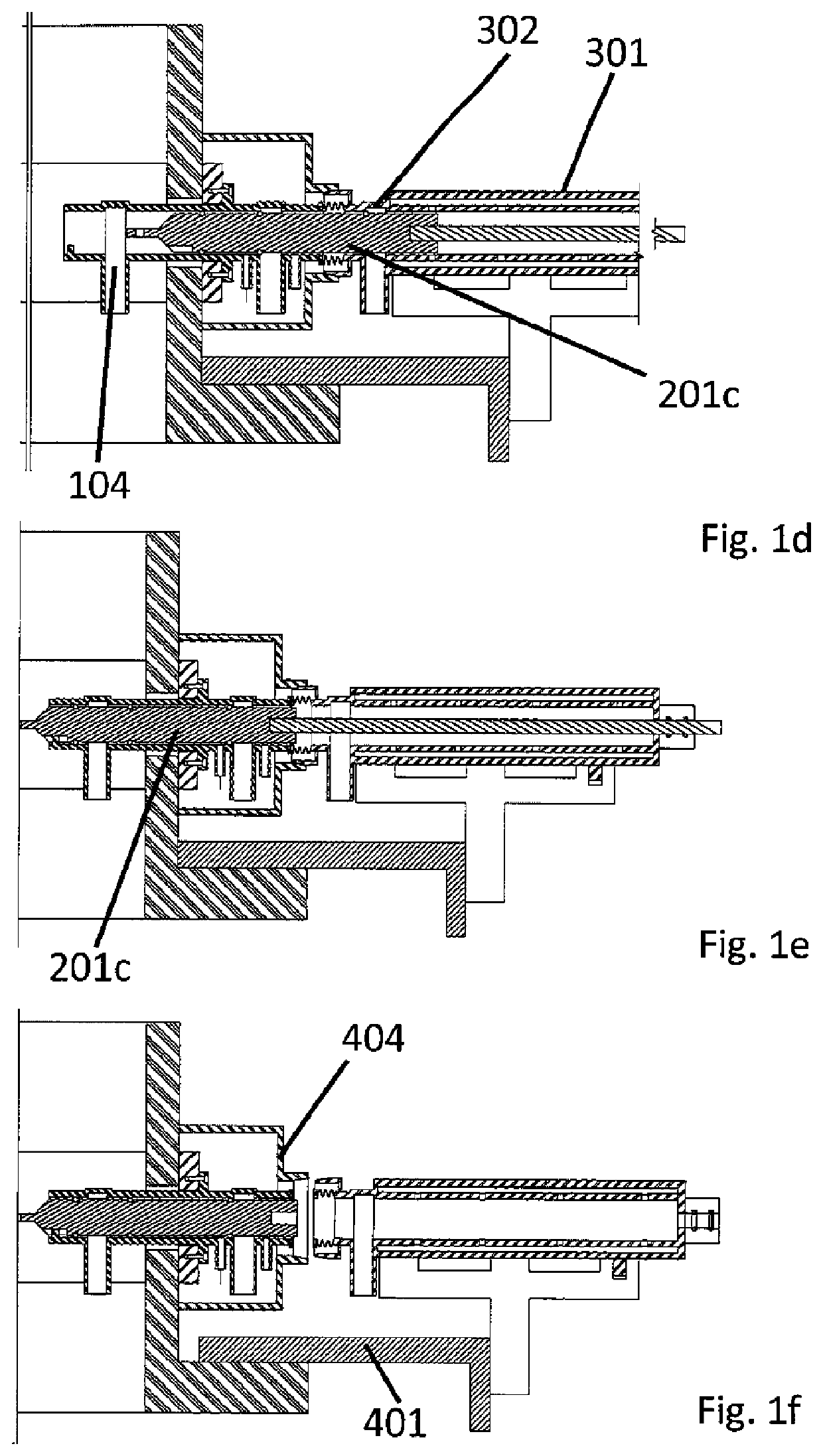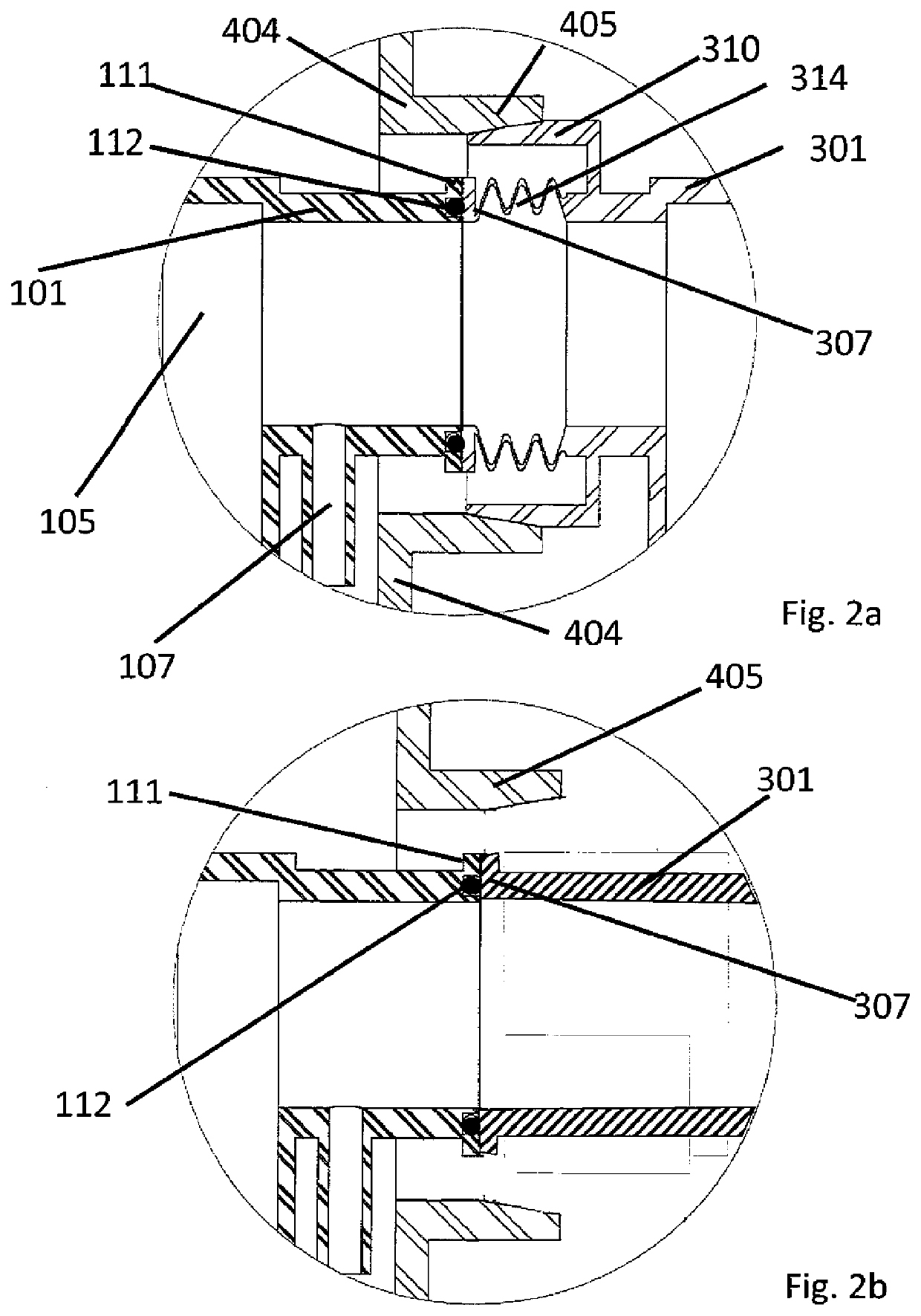Vacuum transfer assembly
a vacuum transfer and assembly technology, applied in the field of vacuum transfer assembly, can solve the problems of affecting the cost of use is typically high, and the pumping time is typically several hours, so as to achieve good vacuum, improve the cooling effect of cryo samples, and facilitate the maintenance of a very low vacuum
- Summary
- Abstract
- Description
- Claims
- Application Information
AI Technical Summary
Benefits of technology
Problems solved by technology
Method used
Image
Examples
examples
[0052]Exemplary Workflow for Vacuum Transfer[0053]1. Set the 401 coupling unit and the sample holder stage 101 in the receive-position.[0054]2. Load the sample in the tip of the sample holder 201 that is located in a glove box 901.[0055]3. Draw back the sample holder fully into the vacuum housing 301.[0056]4. Close the valve of the glove box and the valve 302 of the vacuum housing (pressure within vacuum housing is still at about 1 bar with e.g. Ar; alternatively the vacuum housing can be evacuated through tube 913 before closing the valve on the vacuum housing).[0057]5. Decouple the vacuum housing (with the sample holder in it) from the glove box.[0058]6. Place the vacuum housing (with the sample holder in it) on the coupling unit and clamp the two together.[0059]7. Move the vacuum housing with the coupling unit such that the vacuum housing is fully aligned with the sample holder stage with a separation distance of e.g. 2 mm.[0060]8. Activate the electromagnet to make a connection ...
PUM
 Login to View More
Login to View More Abstract
Description
Claims
Application Information
 Login to View More
Login to View More - R&D
- Intellectual Property
- Life Sciences
- Materials
- Tech Scout
- Unparalleled Data Quality
- Higher Quality Content
- 60% Fewer Hallucinations
Browse by: Latest US Patents, China's latest patents, Technical Efficacy Thesaurus, Application Domain, Technology Topic, Popular Technical Reports.
© 2025 PatSnap. All rights reserved.Legal|Privacy policy|Modern Slavery Act Transparency Statement|Sitemap|About US| Contact US: help@patsnap.com



